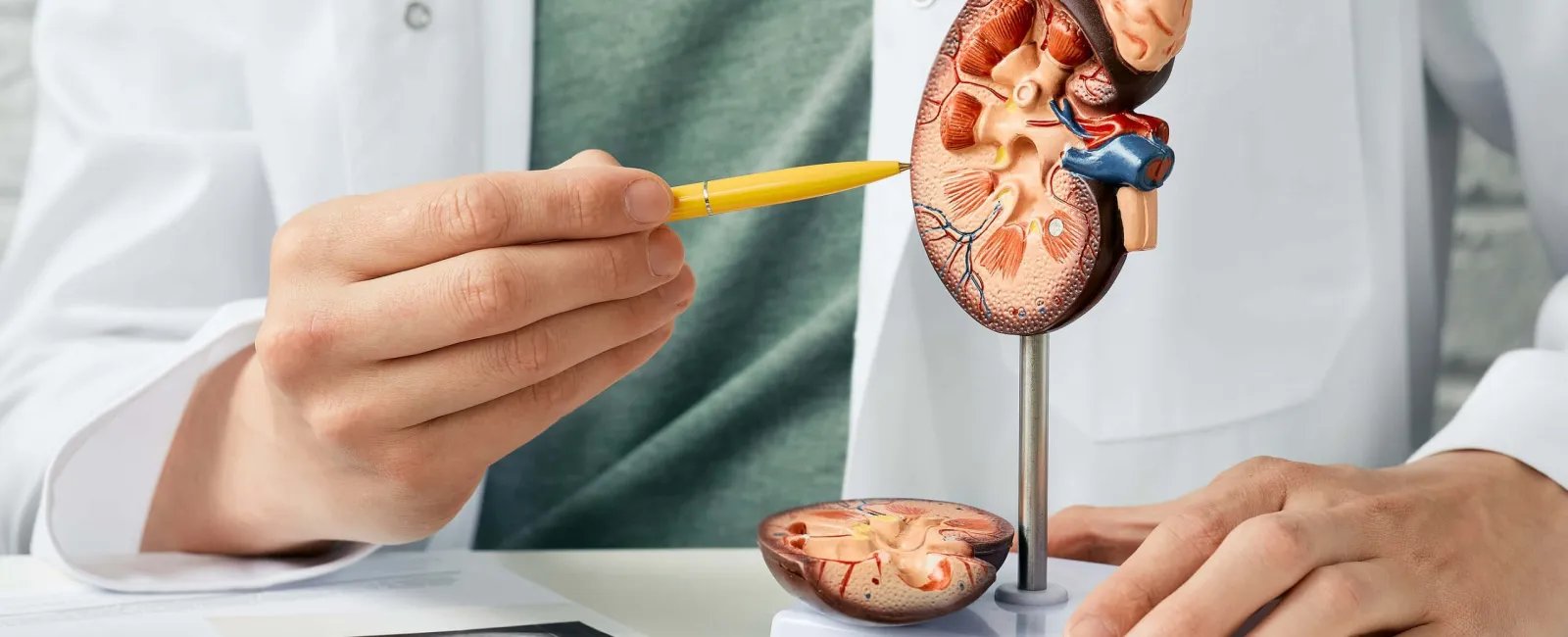Kidney stones are a buildup of salts and minerals that form inside your kidney. They come in various sizes and mineral compositions; however, the shared characteristic is the pain caused when an individual has to pass a stone or stones through their urinary tract. It takes four to 12 months for kidney stones to pass, so understanding this health problem can save weeks or months of health trouble.
Causes of Kidney Stones
Kidney stones form when urine becomes concentrated. Urine is usually expelled from the body without any complications. That said, if an individual doesn’t drink enough water and is unable to properly pass through enough urine volume, substances can begin to crystallize.
Certain minerals or substances are most responsible for kidney stones:
- Calcium Oxalate. Calcium stones are usually present as calcium oxalate. Your liver creates oxalate daily and is produced by your body after consuming certain fruits, vegetables, nuts, and even chocolate. Diet, metabolic disorders, high doses of Vitamin D, and intestinal bypass surgery can increase the levels of calcium and oxalate in urine.
- Calcium Phosphate. This type of stone is common with metabolic conditions. It may also be caused by medications that treat seizures and migraines.
- Uric Acid. Uric acid stones are formed when urine is too acidic for extended periods of time or when uric acid levels are too high. Individuals that don’t drink enough water are more likely to develop these kidney stones. Similarly, chemotherapy, obesity, Type 2 diabetes, a diet high in sugar and salt, certain medications, and too little exercise or too much exercise can also be exacerbating factors.
- Struvite. Struvite stones are a combination of magnesium ammonium phosphate and calcium carbon-apatite. These stones form during urinary tract infections as bacteria invade your urinary tract system and break down urea into ammonia, which creates struvite. These stones rapidly become quite large and can cause health problems if they aren’t passed or removed from the body.
Are Kidney Stones Genetic?
According to twin studies, individuals have over a 50% chance of developing kidney stones if their family has a history of the problem. Likewise, once you’ve had one kidney stone, you’re more likely to develop another. Taking preventative measures before a history develops is, therefore, the best course of action.
Symptoms of Kidney Stones
Kidney stones will not usually cause any symptoms until they have moved around your kidney or passed into the ureters. If it passes into the ureter or tubes connecting your kidneys and bladder, then the flow of urine can become blocked and cause the kidney to swell or the ureter to spasm. When this happens, these additional symptoms can pop up.
- Severe and sharp pain in the back and side, below the ribs
- Pain that is radiating in the lower abdomen and groin
- Pain that is coming in waves and keeps fluctuating in intensity
- A burning or painful sensation while urinating
- Pink, red, or brown urine
- Cloudy or foul-smelling urine
- A continuous urge to urinate, urinating more than usual, or urinating in smaller amounts
- Nausea or vomiting
- Fever and chills if infection is present
When To See a Doctor
If you experience even one of the following symptoms, immediately consult with your doctor:
- Abdominal pains that are causing an inability to sit still or find a comfortable position
- Abdominal Pains accompanied by vomiting and nausea
- Abdominal pain accompanied by fever and chills
- Blood in urine
- An inability to pass urine
Risk Factors
The risk factors of developing kidney stones include genetic inheritance as family history significantly increases the odds of developing stones and dehydration, which causes the kidney to be unable to dilute crystallizing substances. Drinking eight full 8-ounce cups of water each day will help your body in warding off any stones.
At What Age Do You Get Kidney Stones?
Kidney stones in teens and children have become more common over the past 20 years. The buildup of crystallizing substances and minerals is most likely to be developed by individuals between 40 and 60-years-old.
It is important to note, though, that kidney stones in toddlers and premature infants have become more prevalent in recent years, too. Similar advice should be followed for children dealing with kidney stones as the advice recommended for adults, like increasing preventative measures and taking pain medication if needed.
Kidney stones are a problem that can affect a variety of people and are becoming more prevalent in our society today. Knowing the risk factors, causes, and symptoms can help ward off this problem as you strive for a healthy, pain-free life.

